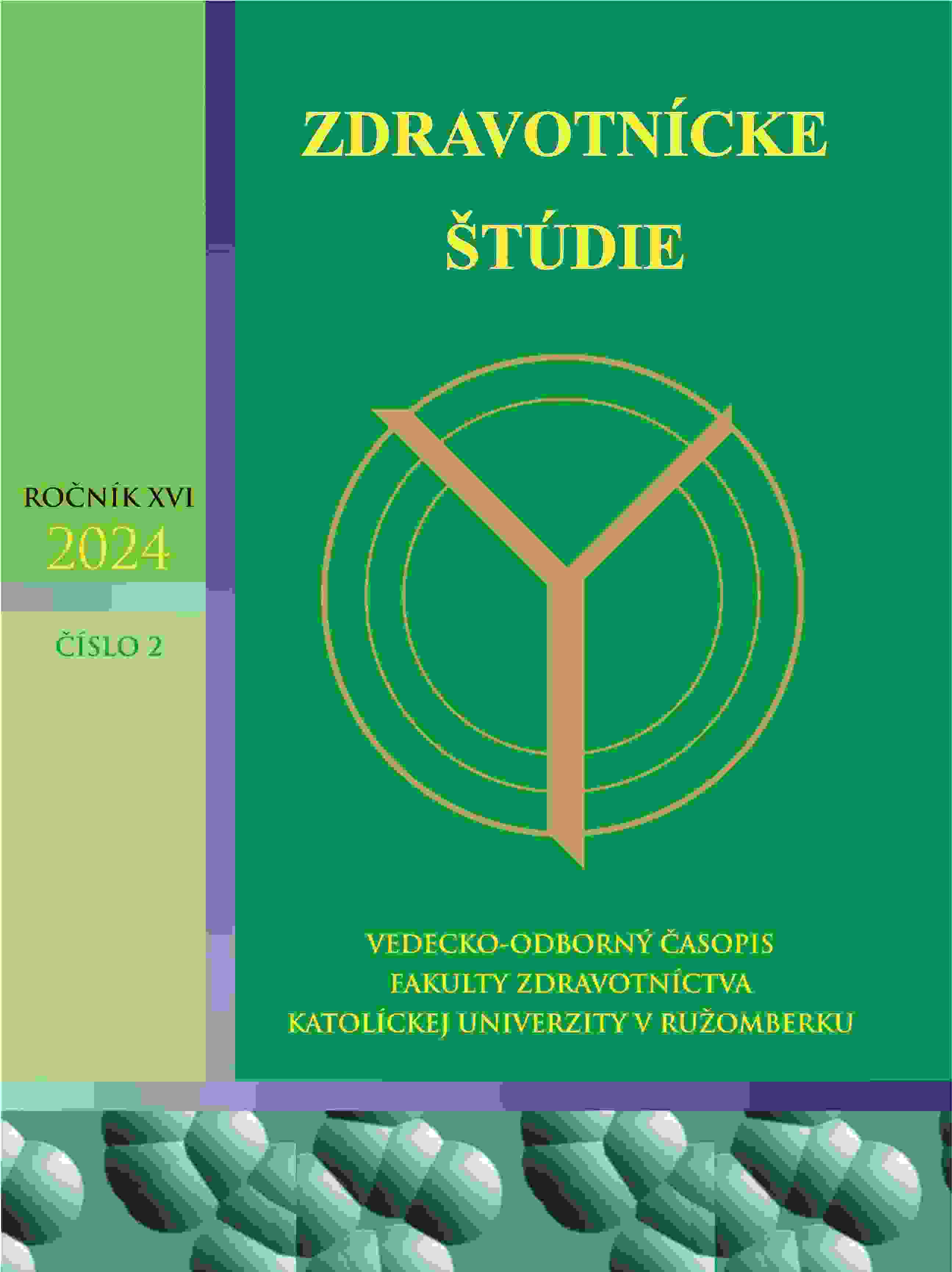Monitorovanie funkčného stavu ako prostriedok prevencie komplikácii u geriatrických pacientov
Monitoring the Functional Status as a Means of Preventing Complications in Geriatric Patients
Author(s): Katarína Zrubáková, Mária Lehotská, Irena Kamanová, Lenka Štefáková, Soňa KajúchováSubject(s): Social Sciences, Sociology, Health and medicine and law
Published by: VERBUM - vydavateľstvo Katolíckej univerzity v Ružomberku
Keywords: Functional status; Geriatric patient; Interdisciplinary cooperation; Monitoring of nutrition; Physical activity and self-sufficiency; Prevention of complications
Summary/Abstract: Introduction- The geriatric patient is included in the category of patients with the highest risk of complications.In the case of institutional treatment, his nutritional status and self-sufficiency may deteriorate, he may decompensate for a chronic disease, he may develop geriatric frailty syndrome, sarcopenia, etc. Therefore, it is necessary to identify health problems and functional limitations of seniors as soon as possible, ideally at the time of their reversibility. Areas that require special attention because they affect the overall health and psychological state of the patient include nutrition, physical fitness and the ability to perform activities of daily living. Objective- The main goal of the research was to point out the benefit of regular monitoring of the functional status of geriatric patients in institutional treatment. The partial goal was to find out the current state of nutrition, physical activity and self-sufficiency in geriatric patients. To find out how the state of nutrition, physical activity and self-sufficiency changes after the intervention by members of the interdisciplinary team. Methodology- The research methods were nutritional anamnesis, standardized measuring tools Mini Nutritional Assessment (MNA), MNA-Short- Form (MNA-SF), Barthel test (ADL), Physical fitness test (SARS-F), Hand-grip test and additional methods - analysis of health documentation, anthropometric measurements and physical examination. The research set were geriatric patients in institutional health and social facilities (SF). The total number was 368, of which 114 were men, 254 were women. Of that number, 132 respondents were hospitalized in the health care facilities (HCF) and 236 in SSF in the Slovak and Czech Republics. Research results - We identified risk factors for malnutrition during the nutritional anamnesis. The most common were difficulties with swallowing (n 46), reduced appetite (n 30), a feeling of fullness (n 29), but also problems with excretion- constipation (n 64). Other risk factors were polypharmacy - 105 patients, use of risky medication (n 67), oncological treatment. The average values of the screening tools were: BMI- 26.74, MNA- 23, MNA-SF- 6.3, SARS-F- 3.38, ADL- 74.5, Hand grip test 8.3. Patients in the HCF had worse nutritional status - 41 had malnutrition and 75 patients were at risk of malnutrition. Avery negative result was the average value of Hand grip and physical fitness test. Patients had 0.05). MNAvalues had an impact on patients‘ level of self-sufficiency and physical fitness. After the identification of the problem, 356 patients had implemented appropriate interventions - dietary modification, sipping, education, enteral and partially parenteral nutrition, rehabilitation, nursing rehabilitation. After repeated monitoring, the values were adjusted. However, the SARS-F values were not adjusted, nor was the grip strength of seniors in SSF. Conclusion- Regular monitoring of the functional status of geriatric patients has its justification. Thanks to the screening tools, we identified patients at risk of malnutrition and sarcopenia and subsequently eliminated the complications related to them. The research results are part of the KEGAproject no. 009 KU-4/2022 Nutrition and physical activity as basic pillars of care for patients at risk.
Journal: Zdravotnícke štúdie
- Issue Year: XVI/2024
- Issue No: 2
- Page Range: 75-79
- Page Count: 5
- Language: Slovak

